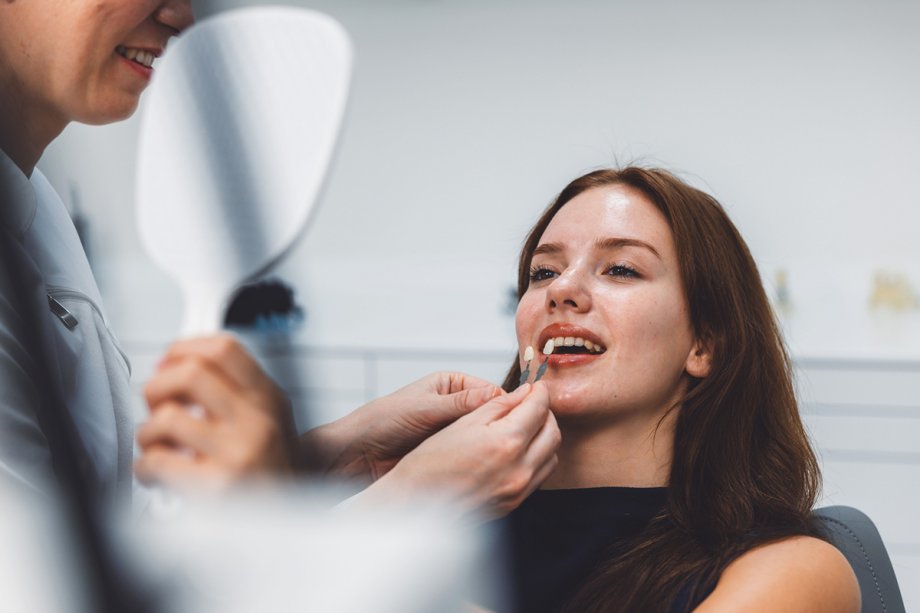When you look in the mirror, you deserve to see a smile you love. For many people, minor imperfections such as chips, gaps, or discoloration can significantly impact their confidence. We see patients every day who want to enhance their smiles but are unsure where to start.
Two of the most popular cosmetic dental procedures we offer are bonding and porcelain veneers. Both can deliver stunning transformations, but they differ significantly in their process, longevity, and, most importantly, cost. Understanding these differences is key to making an informed decision that aligns with your smile goals and your budget.
We believe that financial considerations should not be a barrier to achieving a healthy, beautiful smile. That's why we provide clear, transparent information about the treatments we offer. This guide will break down the cost factors associated with both cosmetic bonding and veneers, helping you understand not just the initial investment but also the long-term value of each option. We will explore the materials, the procedure itself, and what you can expect to pay, so you can choose the path that’s right for you.
Understanding the Initial Investment
The most significant difference most patients notice between cosmetic bonding and veneers is the upfront cost. On a per-tooth basis, bonding is consistently the more affordable option. The price difference stems from the materials used and the time required to complete the procedure.
Why is Cosmetic Bonding More Affordable?
Cosmetic bonding utilizes a composite resin material, a durable, tooth-colored plastic. We apply this resin directly to your tooth, sculpt it into the desired shape, and then harden it with a special light. The entire process typically takes a single visit to our office. Because it doesn't require the creation of a custom restoration in a dental laboratory, we save on lab fees and material costs. These savings are passed directly on to you, making it an accessible entry point into cosmetic dentistry for many of our patients.
What Makes Veneers More Expensive?
Porcelain veneers, in contrast, are thin, custom-made shells crafted from high-quality dental porcelain. This robust material has a translucent quality that mimics the appearance of natural tooth enamel with remarkable accuracy. The process involves preparing the tooth, taking a precise impression, and sending it to a specialized dental lab where your custom veneer is fabricated. This multi-step process, involving the expertise of a lab technician and higher-cost materials, contributes to the higher price tag. While the initial investment is greater, many patients find the durability and aesthetic results to be worth it.
Comparing Long-Term Costs and Durability
While the initial price is a significant factor, we encourage our patients to consider the long-term value of their investment. The durability of each treatment directly impacts how often you might need touch-ups or replacements, which adds to the overall cost over time.
Lifespan of Cosmetic Bonding
Cosmetic bonding is a fantastic solution, but it is not as durable as porcelain. The composite resin material is more susceptible to staining and chipping than porcelain. With excellent oral hygiene and regular dental check-ups, bonding can last anywhere from 3 to 10 years. Patients who smoke or consume a lot of staining foods and drinks, like coffee or red wine, may find that their bonded teeth discolor more quickly. If a bonded tooth chips, the repair is usually simple and can be completed in a single appointment; however, repeated repairs can add up over time.
The Longevity of Porcelain Veneers
Porcelain veneers are known for their strength and resilience. The ceramic material is non-porous, making it highly resistant to stains. This quality means your smile will stay bright and vibrant for years to come. With proper care, porcelain veneers can last for 15 years or even longer, making them a more permanent solution. While the upfront cost is higher, their longevity often makes them a more cost-effective choice in the long run, as you are less likely to need frequent replacements or repairs. The durability of veneers provides peace of mind and a lasting, beautiful result.
Making the Right Choice for Your Smile and Budget
Ultimately, the choice between cosmetic bonding and veneers depends on your individual needs, cosmetic goals, and financial situation. We are here to help you weigh the pros and cons of each option without any pressure.
When is Bonding the Best Choice?
We often recommend cosmetic bonding for patients with minor imperfections. If you have a small chip, a slight gap between your teeth, or minor discoloration that you want to correct quickly and affordably, bonding is an excellent choice. It’s also a great option for younger patients whose teeth and bite are still developing. Because the procedure is minimally invasive and completely reversible, it provides flexibility for future cosmetic treatments. It allows you to "test drive" a new smile without committing to a permanent alteration, such as veneers.
Who Should Consider Veneers?
For patients seeking a more dramatic and long-lasting transformation, veneers are often the ideal solution. If you have multiple cosmetic concerns—such as severe discoloration, worn-down teeth, or significant gaps—veneers can create a comprehensive and uniform result. They provide a "smile makeover" that can completely redefine the shape, color, and alignment of your teeth. While they represent a more significant financial commitment, their durability and superior aesthetic qualities provide an incredible return on investment in the form of a confident, radiant smile that lasts for decades.
Your Smile, Your Decision
Choosing between cosmetic bonding and veneers is a personal decision, and affordability is a crucial part of that conversation. While bonding offers a lower initial cost, veneers provide greater longevity and stain resistance, making them more economical over the lifetime of the restoration. We believe in empowering our patients with all the information they need to make a choice that feels right for them. By discussing your goals, lifestyle, and budget, we can work together to create a treatment plan that will give you a smile you’re proud to share.
Frequently Asked Questions About Cosmetic Bonding
Does dental insurance cover cosmetic bonding?
In most cases, dental insurance does not cover procedures performed solely for cosmetic reasons. However, if bonding repairs a chipped or broken tooth (restorative care), your insurance plan may cover a portion of the cost. We can help you review your benefits to determine what your specific plan covers.
Can cosmetic bonding be whitened?
The composite resin used for bonding does not respond to teeth whitening treatments in the same way natural enamel does. If you plan on whitening your teeth, we recommend doing so before your bonding procedure. This process allows us to match the color of the composite resin to your newly brightened smile, resulting in a seamless, natural look.
At Chagrin Falls Dental, we deliver exceptional dental care to families in Chagrin Falls and the surrounding communities. We combine advanced technology with a compassionate, patient-centered approach to help you achieve optimal oral health and a beautiful smile. To learn more about your cosmetic options or to schedule a consultation, please reach out to us.

